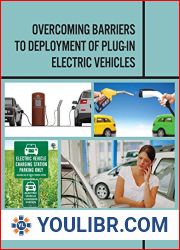
BOOKS - Overcoming Barriers to Deployment of Plug-in Electric Vehicles


US $9.80

273927

273927
Overcoming Barriers to Deployment of Plug-in Electric Vehicles
Author: National Research Council
Year: July 10, 2015
Format: PDF
File size: PDF 7.0 MB
Language: English
Year: July 10, 2015
Format: PDF
File size: PDF 7.0 MB
Language: English
In the past few years, interest in plug-in electric vehicles (PEVs) has grown. Advances in battery and other technologies, new federal standards for carbon-dioxide emissions and fuel economy, state zero-emission-vehicle requirements, and the current administration's goal of putting millions of alternative-fuel vehicles on the road have all highlighted PEVs as a transportation alternative. Consumers are also beginning to recognize the advantages of PEVs over conventional vehicles, such as lower operating costs, smoother operation, and better acceleration; the ability to fuel up at home; and zero tailpipe emissions when the vehicle operates solely on its battery. There are, however, barriers to PEV deployment, including the vehicle cost, the short all-electric driving range, the long battery charging time, uncertainties about battery life, the few choices of vehicle models, and the need for a charging infrastructure to support PEVs. What should industry do to improve the performance of PEVs and make them more attractive to consumers? At the request of Congress, Overcoming Barriers to Deployment of Plug-in Electric Vehicles identifies barriers to the introduction of electric vehicles and recommends ways to mitigate these barriers. This report examines the characteristics and capabilities of electric vehicle technologies, such as cost, performance, range, safety, and durability, and assesses how these factors might create barriers to widespread deployment. Overcoming Barriers to Deployment of Plug-in Electric Vehicles provides an overview of the current status of PEVs and makes recommendations to spur the industry and increase the attractiveness of this promising technology for consumers. Through consideration of consumer behaviors, tax incentives, business models, incentive programs, and infrastructure needs, this book studies the state of the industry and makes recommendations to further its development and acceptance.














































